 W
WThe Japanese anchovy is a schooling fish of the family Engraulidae. It is common in the Pacific Ocean south from the Sea of Okhotsk, widespread in the Sea of Japan, Yellow Sea, and East China Sea, and near the coasts of Japan. They live up to 2–3 years, similar to European anchovy. They spawn from Taiwan to southern Sakhalin.
 W
WThe clouded angelshark is an angelshark of the family Squatinidae found in the northwest Pacific from the southeastern Sea of Japan to Taiwan between latitudes 47° N and 22° N. Its length is up to 1.63 m.
 W
WThe Japanese angelshark is a species of angelshark, family Squatinidae, found in the northwestern Pacific Ocean off China, Japan, and Korea. It is a bottom-dwelling shark found in sandy habitats down to 300 m (980 ft) deep. This species has the flattened shape with wing-like pectoral and pelvic fins typical of its family, and grows to 1.5 m (4.9 ft) or more in length. Its two dorsal fins are placed behind the pelvic fins, and a row of large thorns occurs along its dorsal midline. Its upper surface is cryptically patterned, with numerous squarish dark spots on a brown background.
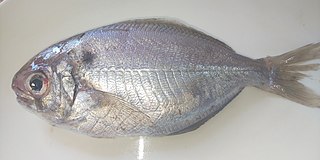 W
WThe Pacific rudderfish is a marine fish also known by such names as Japanese butterfish, melon seed, wart perch, ibodai or simply but ambiguously as butterfish.
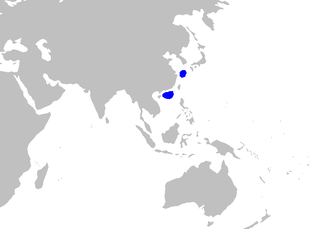 W
WThe blackgill catshark is a deepwater catshark known from very few specimens, found on or near the bottom on the continental slope, at 540–835 metres (1,772–2,740 ft) off the coasts of China and Japan. Specimens can attain a total length of at least 85 cm (33 in), but nothing else is known of its biology. This shark is a potential bycatch of deepwater bottom-trawl fisheries operating within its range, but no specific information is available.
 W
WThe blackspotted catshark is a catshark of the family Scyliorhinidae. It is found in the waters off the coasts of Japan, Korea, China, and Taiwan between latitudes 39° N and 20° N, at the depths of between 80 and 100 m. It can grow up to 49 cm in length.
 W
WThe bulldog catshark is a catshark of the family Scyliorhinidae, found in the deep waters of the East China Sea and in the Northwest Pacific. In New Zealand waters it is found at the Reinga Ridge, the West Norfolk Ridge, the Hikurangi Trough and the Chatham Rise as well as on the Campbell Plateau.
 W
WThe cloudy catshark is a common species of catshark, belonging to the family Scyliorhinidae. It is a bottom-dweller that inhabits rocky reefs in the northwestern Pacific Ocean, from the shore to a depth of 320 m (1,050 ft). Growing up to 50 cm (20 in) long, this small, slim shark has a narrow head with a short blunt snout, no grooves between the nostrils and mouth, and furrows on the lower but not the upper jaw. It is also characterized by extremely rough skin and coloration consisting of a series of dark brown saddles along its back and tail, along with various darker and lighter spots in larger individuals.
 W
WThe shortnose demon catshark is a catshark of the family Scyliorhinidae found only in deep water in the East China Sea. Its length is up to 40 cm. A. internatus is known only from the holotype and a paratype, both caught in the East China Sea, probably taken as bycatch in deepwater trawl fisheries. Insufficient information is available to assess this species' conservation status. The reproduction of this catshark is oviparous.
 W
WThe flathead catshark is a catshark of the family Scyliorhinidae in the order Carcharhiniformes, found in the deep waters of the northwest Pacific Ocean.
 W
WThe gecko catshark is a species of catshark, part of the family Scyliorhinidae, native to the northwestern Pacific Ocean from southern Japan to Taiwan, and possibly also off Vietnam. It is a common, demersal species found at depths of 100–900 m (330–2,950 ft). Its body is slender, with a pattern of dark saddles and blotches. The dorsal and caudal fins are edged in white, and there is a prominent crest of enlarged dermal denticles along the dorsal edge of the caudal fin. The gecko catshark is a schooling, opportunistic predator of bony fishes, cephalopods, and crustaceans. It is oviparous, with females producing two vase-shaped egg capsules at a time. This species is captured as bycatch, but does not appear to be threatened by fishery activities at present and has been assessed as Least Concern by the International Union for Conservation of Nature (IUCN).
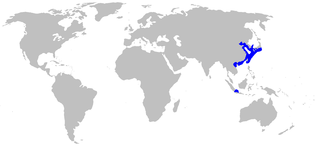 W
WThe graceful catshark is a species of finback catshark, belonging to the family Proscylliidae. This shark is found in the western Pacific Ocean, from southeastern Japan to Vietnam and northwestern Java, at depths between 50 and 100 m. Females can reach a length of 65 cm.
 W
WThe speckled catshark is a catshark of the family Scyliorhinidae. It is found in the Gulf of Aden and off the coast of Somalia. It occurs at depths of between 37 and 250 m. Its length is up to 48 cm.
 W
WThe pearl-spot chromis or spottedfin puller is a damselfish of the family Pomacentridae, found in the northwest Pacific from southern Korea, the coast of Jeju Island, southern Japan, the Ryukyu Islands, Taiwan, and China, at depths of between 2 and 15 m. Its length is up to 17 cm.
 W
WThe whitespotted conger is a marine conger eel, widespread in the Northwest Pacific near the coasts of Japan, Korean Peninsula, and the East China Sea. C. myriaster inhabits shallow sea bottom sand and mud. It is also consumed as food and is a common item on menus in Japan and abroad as anago. Its maximum total length is 100 cm.
 W
WThe spiny dogfish, spurdog, mud shark, or piked dogfish is one of the best known species of the Squalidae (dogfish) family of sharks, which is part of the Squaliformes order. While these common names may apply to several species, Squalus acanthias is distinguished by having two spines and lacks an anal fin. It is found mostly in shallow waters and further offshore in most parts of the world, especially in temperate waters. Spiny dogfish in the northern Pacific Ocean have recently been reevaluated and found to constitute a separate species, now known as "Pacific spiny dogfish", Squalus suckleyi.
 W
WThe Japanese eel is a species of anguillid eel found in Japan, Korea, China, Taiwan, and Vietnam, as well as the northern Philippines. Like all the eels of the genus Anguilla and the family Anguillidae, it is catadromous, meaning it spawns in the sea, but lives parts of its life in fresh water. The spawning area of this species is in the North Equatorial Current in the western North Pacific to the west of the Mariana Islands. The larvae are called leptocephali and are carried westward by the North Equatorial Current and then northward by the Kuroshio Current to East Asia, where they live in rivers, lakes, and estuaries. The Japanese eel is an important food fish in East Asia, where it is raised in aquaculture ponds in most countries in the region. In Japan, where they are called unagi, they are an important part of the food culture, with many restaurants serving grilled eel, which is called kabayaki.
 W
WThe ridged-eye flounder, also known as the frog flounder, is a flatfish of the family Pleuronectidae. It is a demersal fish that lives on sand and mud coastal bottoms at depths of between 2 and 170 metres. Its native habitat is the temperate waters of the northwestern Pacific, from southern Hokkaido to the Korean peninsula, the Bohai Sea, the Yellow Sea and the South China Sea. It can grow up to 30 centimetres (12 in) in length, and can weigh up to 1 kilogram (2.2 lb).
 W
WThe slime flounder is a kind of flatfish from the family Pleuronectidae. It is a demersal fish that lives on sand and mud bottoms at depths of between 15 and 800 metres, though it is most commonly found between 20 and 610 metres. Its native habitat is the temperate waters of the northwest Pacific, from the East China Sea to the Yellow Sea and the Sea of Japan, as far as Sakhalin and the Kuril Islands. It reaches up to 60 centimetres (24 in) in length, and can weigh up to 1.76 kilograms (3.9 lb).
 W
WThe stone flounder is a flatfish of the family Pleuronectidae. It is a demersal fish that lives on sandy and muddy bottoms in coastal areas at depths of up to 150 metres (490 ft). Its native habitat is the temperate waters of the northwest Pacific, from Japan to the Kuril islands, Sakhalin, Korea, northern China and Taiwan. It is oceanodromous and is found in salt, brackish and fresh waters. It can grow up to 50 centimetres (20 in) in length, and may reach 12 years of age.
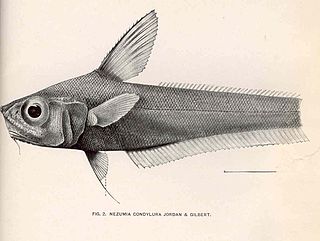 W
WThe Japanese pugnose grenadier is a species of rattail fish. It is found at depths of up to 720 m in the waters around southern Japan, northern Taiwan and in the East China Sea.
 W
WThe spiny red gurnard is a species of searobin native to the northwestern Pacific Ocean where they occur at depths of from 25 to 615 metres. This species grows to a length of 40 centimetres (16 in) TL. This species is of commercial importance as a food fish.
 W
WThe inshore hagfish is a hagfish found in the Northwest Pacific, from the Sea of Korea and across eastern Japan to Taiwan. It has six pairs of gill pouches and gill apertures. These hagfish are found in the sublittoral zone. They live usually buried in the bottom mud and migrate into deeper water to spawn. The inshore hagfish is the only member of the Myxinidae family having a seasonal reproductive cycle.
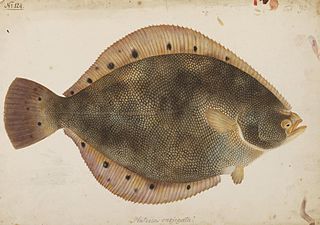 W
WThe spotted halibut is a flatfish of the family Pleuronectidae. It is a demersal fish that lives on sandy, muddy bottoms in the sublittoral coastal zone at depths of up to 100 metres (330 ft). It can reach 60 centimetres (24 in) in length and can weigh up to 4.0 kilograms (8.8 lb). Its native habitat is the northwestern Pacific, from Japan to Korea and the East China Sea.
 W
WHippocampus haema, the Korean seahorse, is a seahorse of the family Syngnathidae native to the northern Pacific Ocean, and it usually lives in Sargassum and weeds on shallow soft bottom habitats from 0 to 18 m depth. The Korean seahorse is the most common seahorse in Korean waters so that the scientific name 'haema' is named from 'seahorse' in Korean. The Japanese name 'Himetatsu' is derived from its smaller shape such as body and coronet rather than the shape of a sister species, crowned seahorse. This species had been repeatedly misidentified as crowned seahorse and Shiho's seahorse before a taxonomic review. However, the two genuine species do not live in Korean waters, therefore this species was handled by naming a new scientific name, Hippocampus haema. It can grow to lengths of 11 centimeters, but more commonly 6 to 8 centimeters as adult. Namely, the length of juvenile is 1 to 5 centimeters, whereas and the lengths of males and females reaching sexual maturity are considered as ca. 5 centimeters with or without male brood pouch. However, sex determination of this species is considered as ca. 2 centimeters from anatomic examination of gonad. This species has sexual dimorphism, the difference is male has a longer tail, while female has a longer trunk for same size. Breeding season of this species is from May to November, relating to warm water temperature.
 W
WThe shuttles hoppfish or shuttles mudskipper is a species of mudskippers native to fresh, marine and brackish waters of the northwestern Pacific Ocean from Vietnam to Korea and Japan. This species occurs in muddy estuaries, tidal flats and swamps and marshes and is capable of remaining out of the water for up to 60 hours so long as it is kept moist. This species can reach a length of 10 centimetres (3.9 in) TL. This species can also be found in the aquarium trade and is also used in traditional Chinese medicine.
 W
WThe elongate ilisha, also known as the Chinese herring or slender shad, is a species of longfin herring native to the coastal waters and estuaries of North Indian Ocean and Northwest Pacific. It is a relatively large species, up to 45–60 centimetres (18–24 in) in total length. It is an important fishery species.
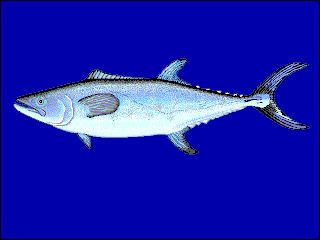 W
WThe Chinese mackerel, also known as the Chinese seerfish, is a ray-finned bony fish in the family Scombridae, better known as the mackerel family. More specifically, this fish is a member of the tribe Scomberomorini, the Spanish mackerels. It is a marine species occurring in the Western Pacific Ocean, but it also enters the Mekong River.
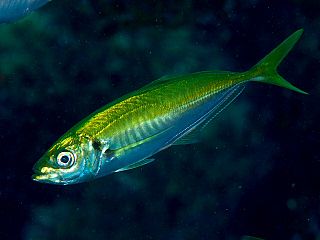 W
WThe Japanese jack mackerel, also known as the Japanese horse mackerel or Japanese scad, is a species named after its resemblance to mackerel but which is in the family Carangidae, the jacks, pompanos, trevallies and scads. Their maximum reported length is 50 cm (20 in) with a common length of 35 cm (14 in). They have a maximum reported weight of 0.66 kg (1.5 lb) and a maximum reported age of 12 years. They are found around the coast of Japan, apart from Okinawa Island, usually on sandy bottoms of 50–275 m (164–902 ft) deep. They feed mainly on small crustaceans such as copepods, and shrimps and small fish. They are similar to the yellowtail horse mackerel around New Zealand and Australia, apart from having more gill rakers and larger eyes.
 W
WThe Kidako moray is a species of marine fish in the family Muraenidae.
 W
WThe numbray or spottail sleeper ray is a species of electric ray in the family Narkidae. It may be found in shallow muddy estuaries or offshore depths. It is a weak swimmer that lies on the bottom, commonly buried. It eats small marine invertebrates and fish. It pounces on its prey and wraps its body around its prey, killing or stunning it with electrical shocks. It has been observed that Numbrays are not as common as other types of rays in the area around the Indian Ocean. This can be attributed to the relatively large doubling time for a population, reaching up to 18 years.
 W
WThe Japanese sleeper ray is a species of electric ray in the family Narkidae. It is common in the inshore and offshore waters of the northwestern Pacific Ocean from southern Japan to southern China. Growing up to 40 cm (16 in) long, the Japanese sleeper ray has a nearly circular pectoral fin disc colored reddish to chocolate brown above, sometimes with darker or lighter spots, and lighter brown below. The spiracles behind its small eyes have raised, smooth rims. Its short and muscular tail bears a single dorsal fin positioned aft of the rounded pelvic fins, and terminates in a large caudal fin.
 W
WThe Japanese sea bass is a species of catadromous marine ray-finned fish from the Asian sea bass family Lateolabracidae which is found in the Western Pacific. In Japan this species is known as suzuki (鱸).
 W
WKonosirus punctatus is a species of fish in the family Clupeidae, the herrings and sardines. It is the only member of the monotypic genus Konosirus. Its common names include dotted gizzard shad, konoshiro gizzard shad, and spotted sardine. It is native to the northwestern Pacific Ocean, where it occurs along the Asian coastline.
 W
WThe brownbanded bamboo shark, Chiloscyllium punctatum, is a bamboo shark in the family Hemiscylliidae found in the Indo-West Pacific from Japan to northern Australia, between latitudes 34° N and 26° S, to depths of 85 metres (279 ft). Its length is up to 1.04 metres (41 in). While adults are overall brownish with faint suggestions of bands, the commonly seen juveniles are distinctly barred dark and pale.
 W
WThe slender bamboo shark, Chiloscyllium indicum, is a bamboo shark in the family Hemiscylliidae found in the Indo-West Pacific Oceans between latitudes 40° N and 10° S, and longitude 65° E and 160° E. Its length is up to 65 cm.
 W
WThe copper shark, bronze whaler, or narrowtooth shark, is a species of requiem shark, family Carcharhinidae, and the only member of its genus found mostly at temperate latitudes. It is distributed in a number of separate populations in the northeastern and southwestern Atlantic, off southern Africa, in the northwestern and eastern Pacific, and around Australia and New Zealand, with scattered reports from equatorial regions. This species can be found from brackish rivers and estuaries, to shallow bays and harbors, to offshore waters 100 m (330 ft) deep or more. Females are found apart from males for most of the year, and conduct seasonal migrations. A large species reaching 3.3 m (11 ft) long, the copper shark is difficult to distinguish from other large requiem sharks. It is characterized by its narrow, hook-shaped upper teeth, lack of a prominent ridge between the dorsal fins, and plain bronze coloration.
 W
WThe broadnose sevengill shark is the only extant member of the genus Notorynchus, in the family Hexanchidae. It is recognizable because of its seven gill slits, while most shark species have five gill slits, with the exception of the members of the order Hexanchiformes and the sixgill sawshark. This shark has a large, thick body, with a broad head and blunt snout. The top jaw has jagged, cusped teeth and the bottom jaw has comb-shaped teeth. Its single dorsal fin is set far back along the spine towards the caudal fin, and is behind the pelvic fins. In this shark the upper caudal fin is much longer than the lower, and is slightly notched near the tip. Like many sharks, this sevengill is counter-shaded. Its dorsal surface is silver-gray to brown in order to blend with the dark water and substrate when viewed from above. In counter to this, its ventral surface is very pale, blending with the sunlit water when viewed from below. The body and fins are covered in a scattering of small black & white spots. In juveniles, their fins often have white margins.
 W
WThe mottled skate is a species of skate in the family Rajidae. An inhabitant of shallow coastal waters, it is found in the northwestern Pacific Ocean off Korea, Japan, and China. This species grows to 1.12 m (3.7 ft) long and has a diamond-shaped pectoral fin disc with a long snout. It is characterized by a covering of prickles above and below its snout, but not elsewhere on its body, and a dark ring in the middle of each "wing".
 W
WThe spotless smooth-hound is a species of houndshark, in the family Triakidae, found on the continental shelves of the northwest Pacific, between latitudes 40° N and 11° N, from the surface to a depth of 300 m. It can grow to a length of up to 1 m.
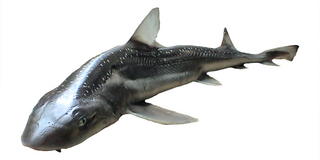 W
WThe starspotted smooth-hound is a houndshark of the family Triakidae. It is found in east Asia and in the western Indian Ocean between latitudes 45° N and 10° S, from the surface to a depth of 360 m. The reproduction of this shark is Ovoviviparous.
 W
WThe blotched snake-eel is a species of eel in the family Ophichthidae. It is a marine, subtropical eel which is known from the Indo-Pacific, including South Africa, Japan and Taiwan. It dwells at a maximum depth of 155 metres, inhabits reefs and leads a benthic life, forming burrows in sand. Males can reach a maximum total length of 72 centimetres.
 W
WThe Australasian snapper or silver seabream, is a species of porgie found in coastal waters of Australia, Philippines, Indonesia, China, Taiwan, Japan and New Zealand. Its distribution areas in the Northern and Southern Hemispheres are disjunct. Although it is almost universally known in Australia and New Zealand as snapper, it does not belong to the snapper family, Lutjanidae. It is highly prized as an eating fish.
 W
WThe sepia stingray is a species of fish in the family Urolophidae. It is found in Japan, Taiwan, Vietnam, possibly North Korea, and possibly South Korea. It is threatened by habitat loss.
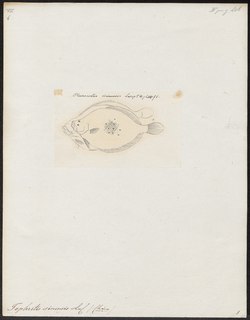 W
WTephrinectes sinensis, the Chinese brill, is a species of flatfish in the large-tooth flounder family, Paralichthyidae. It is the only member of its genus Tephrinectes. Like the rest of the large-tooth flounders, it has both eyes on the left side of its head.
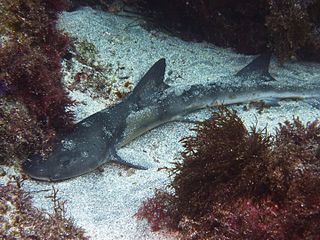 W
WThe Japanese topeshark is a species of houndshark, in the family Triakidae. It can reach a length of up to 1.1 m. It is found in the subtropical northwest Pacific from China, Taiwan, Korea, and Japan, between latitudes 40° N and 21° N.
 W
WThe coastal trevally, also known as the onion trevally, Japanese trevally or bluefin kingfish, is a species of inshore marine fish in the jack family Carangidae. The species is distributed throughout the tropical and subtropical waters of the Indian and west Pacific Oceans, from South Africa in the west to Japan and New Caledonia in the east, reaching as far south as Australia. The species is found on deep coastal reefs, both in schools and as solitary individuals, where they prey on small midwater organisms including crustaceans, small fish and cephalopods. The species is taken as bycatch in a number of fisheries throughout its range by a number of fishing methods and is of little commercial value, but is considered to be a good table fish. A mistype in the original volume in which Eduard Rüppell named the species led to the combination Carangoides caeruleopinnatus, which has incorrectly spread through the literature.
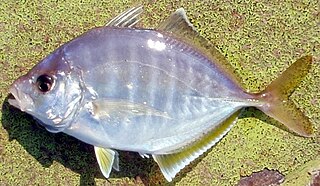 W
WThe whitefin trevally, also known as the horse trevally, is a species of deep water offshore fish in the jack family Carangidae. The species inhabits the tropical to temperate waters of the Indo-Pacific and central Pacific, ranging from South Africa in the west to Hawaii in the east. The whitefin trevally is a moderate-sized fish, growing to 37 cm, and is distinguished by a number of morphological traits, including fin size, gill raker count, and colour. It inhabits the continental shelf and slope at depths to 200 m over sand and mud substrates, where it preys on fish, crustaceans, and cephalopods. Studies in Japan indicate a length at sexual maturity of 17.4 cm on average, with spawning occurring between May and October, with each individual spawning multiple times. Whitefin trevallies are of high importance to fisheries in Japan, where they are taken by trawlers, although the catch numbers have halved since the 1980s. It is of minor importance elsewhere throughout its range, but is considered a good table fish.
 W
WThe Japanese whiptail or Japanese butterfish is a species of marine fish in the coral bream family (Nemipteridae) of order Perciformes. It is native to the western Pacific Ocean.
 W
WThe Japanese wobbegong is a carpet shark in the family Orectolobidae of the wobbegong family, found in the tropical western Pacific Ocean from Japan and Korea to Viet Nam and the Philippines, between latitudes 43 and 6°N. It reaches a length of 1 m. Japanese wobbegong sharks typically remain motionless during the daytime, and are not active hunters. They use camouflage and their electroreceptor pores on their dorsal area to help them sense prey nearby.